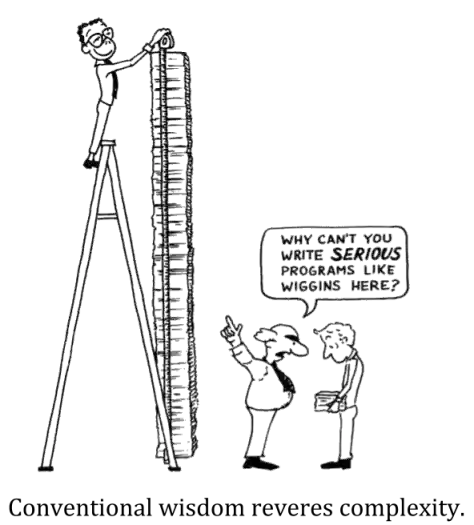
In his 1985 book Thinking Forth, author Leo Brodie lampoons the computer industry with this cartoon for having a preference for complicated solutions to problems. That preference has followed us into the Internet Age. We see evidence of it in the many websites that are more difficult to use or costly to operate than they should be.
The complexity takes various forms. It could be web pages crammed with a disorienting cacophony of colors, text, and graphics. The most common extreme bloat are the web pages that have far too much coding than necessary to produce the display on screen and images that are in inefficient formats.
History
It started out with elegant simplicity. The World Wide Web was a simple way of publishing content to the world efficiently. You just needed to learn a small amount of coding that was not at all difficult. Then the inevitable happened. Features were added that increased the size of the coding language. Tools were created to allow people to create websites without having to learn that language. That in itself is not bad.
What's bad is the terrible job many of these tools do. Called by a variety of names—such as Content Management Systems—they can create web pages that are HUGE and inefficient when compared to web pages created by even a moderately-skilled craftsman.
The dark side...
...of website complexity:
- Bloated websites consume more bandwidth than they should.
- Web pages generally load more slowly by the user's browser.
- The greater the code, the more difficult it is to find and fix problems.
- The greater the code, the greater the chance of security issues and errors.
- Websites may have dependencies that impact its reliability but they're controlled by others.
Our solution
Our goal is to offer those with bloated, complicated, and inefficient websites a way out by providing training, guidance, and services. We think that web developers should either learn that language or use tools that produce efficient code.
Case studies
To make our case, we looked to friends who were using inefficient tools to create and maintain their websites. As a demonstration, we converted some or all of their websites to show the efficiencies that could be realized. The differences were always very significant. Here are examples of our efforts.